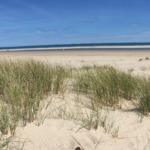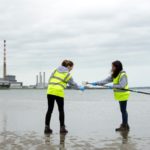The EPA has today published the Bathing Water in Ireland…
New EEA report: Bathing water management in Europe – successes and challenges
The share of bathing sites with excellent water quality in Europe has increased from 53 % in 1991 to 85 % in 2019, thanks to local actions guided by binding European legislation. A new European Environment Agency (EEA) report shows how improving bathing water quality can serve as a model for successful environmental legislation and management.
The EEA report ‘Bathing water management in Europe: Successes and challenges’ showcases the success story of the improvements in bathing water quality since the introduction of the EU Bathing Water Directive in 1976, while also identifying challenges for future bathing water management.
In Europe and many other parts of the world, the quality of coastal waters, rivers and lakes generally degraded from the 19th century onwards, mainly owing to growing towns and industries discharging untreated waste water. During the 20th century, the increased use of pesticides and fertilisers on agricultural land added to this pollution.
However, European environmental policy and management have dramatically improved bathing water quality across Europe during the past 40 years.
Safe bathing is now possible in many European capitals, including Amsterdam, Berlin, Budapest, Copenhagen, London, Riga and Vienna, the report notes.
Significant investments in urban waste water treatment plants and improvements in sewerage networks have been the key measures behind this success.
EEA data show that the number of bathing sites monitored under the Bathing Water Directive has increased from about 7,500 in 1990 to more than 22,000 in 2019. From 1991 to 2019, the share of bathing sites with sufficient water quality has increased from 74 % to more than 95 % and the share of sites with excellent water quality from 53 % to 85 %.
While bathing water quality in Europe is improving and today bathing is possible even in some heavily urbanised areas, there is still a need to mitigate both existing and emerging pressures.
The report warns that climate change will bring new challenges for bathing water management, for example, due to rising sea levels, more frequent and stronger storms, increased river flow or water scarcity. Nutrient and chemical pollution as well as plastic pollution also remain problems that require stronger action.
Case study from the report: water policy integration – the case of Ardmore beach
Ardmore beach is a sandy beach on the south coast of Ireland near Ardmore village. It is visited by hundreds of bathers, surfers and kayakers during the bathing season. The biodiversity of the beach and its surroundings is relatively high. Between the beach and the harbour, low tide allows access to rock pools, which are home to marine organisms such as shrimps, crabs, fish and anemones. Natural heritage areas situated in the vicinity of the beach include vegetated sea cliffs and coastal dry heather, which are home to many bird species, and the Blackwater estuary, an internationally important wetland site.

During 2014, high tides and strong winds interfered with the normal dispersion and dilution of screened sewage from the nearest waste water treatment plant, causing bathing water to be classified as ‘poor’. To improve bathing water quality, water discharged from the treatment plant was given additional treatment during the bathing season. Bacterial levels were significantly reduced. Bathers, surfers and kayakers returned to the beach as soon as the advisory notice was removed. A new waste water treatment plant for Ardmore village was commissioned in early 2016 and the bathing water quality at Ardmore is now classified as ‘excellent’.
Learn more:
EEA press release and report: www.eea.europa.eu/highlights/europes-clean-bathing-waters
www.beaches.ie shows you the nearest bathing water to you and the latest results of bathing water quality monitoring during the bathing season, which runs from 1 June to 15 September.







